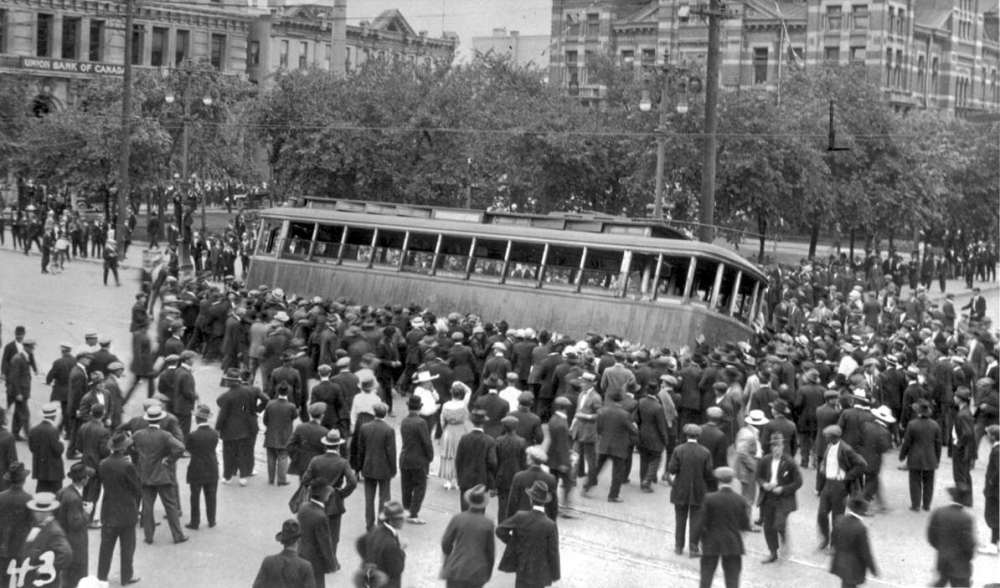Looking back on the Winnipeg General Strike
Advertisement
Hey there, time traveller!
This article was published 11/02/2019 (2511 days ago), so information in it may no longer be current.
The beginning of a new year is a great time to look back and reflect.
One hundred years ago life was pretty rough. The year 1919 was a tumultuous year and the four years that preceded it were no better. The First World War and its devastating death toll dominated the years 1914 to 1918.

Countless Winnipeg men lost their lives or returned injured for life. The Spanish Flu hit in 1918 and killed many more people.
Surviving veterans did not have jobs and the high cost of living and low wages made life for working people a constant struggle even for those who did have jobs.
Conditions during the war had led to numerous small strikes so it does not seem surprising then that mounting pressures in our city would lead to one of the largest and most significant strikes in Canada.
In early May of 1919, Winnipeg’s building and metal trades workers went on strike, fighting for the right to collective bargaining, better wages and working conditions. In the following days, about 30,000 workers walked off their jobs in solidarity.
Many soldiers supported the strike. Police officers, firemen, postal workers, telephone operators, male and female factory workers and thousands more followed suit.
Opposition to the strike grew among the city’s elite. According to The Canadian Encyclopedia, “The Citizens’ Committee of 1,000” was created soon after and was composed of “Winnipeg’s most influential manufacturers, bankers and politicians.”
The committee “declared the strike a revolutionary conspiracy led by a small group of ‘alien scum.’”
The federal government supported them and the “Immigration Act was amended so British-born immigrants could be deported. The Criminal Code’s definition of sedition was also broadened.”
Ten strike leaders were arrested. Winnipeg’s mayor, Charles Gray, banned all demonstrations. But on June 21, now known as Bloody Saturday, the Royal North West Mounted Police were called in along with ‘special’ police (volunteers) and the military when a crowd of strikers gathered. The police and troops charged into the gathering crowd with batons and guns. Shots were fired.
According to a documentary about Bloody Saturday produced by Andy Blicq, two men were killed that day. Many were injured.
The strike that had lasted six weeks came to an end. An alley near Centennial Concert Hall became known as Hell’s Alley for the violent clashes that happened there.
Many events are planned to mark the centennial of the strike in 2019. Local playwright Danny Schur, who created the Strike! musical, also plans to release a movie version. The trailer can be seen on the Stand! Movie facebook page.
The Bloody Saturday documentary can be found on YouTube.
Cheryl Girard is a community correspondent for West Kildonan. You can contact her at girard.cheryl@gmail.com

Cheryl Girard
West Kildonan community correspondent
Cheryl Girard was a community correspondent for West Kildonan.
Our newsroom depends on a growing audience of readers to power our journalism. If you are not a paid reader, please consider becoming a subscriber.
Our newsroom depends on its audience of readers to power our journalism. Thank you for your support.




